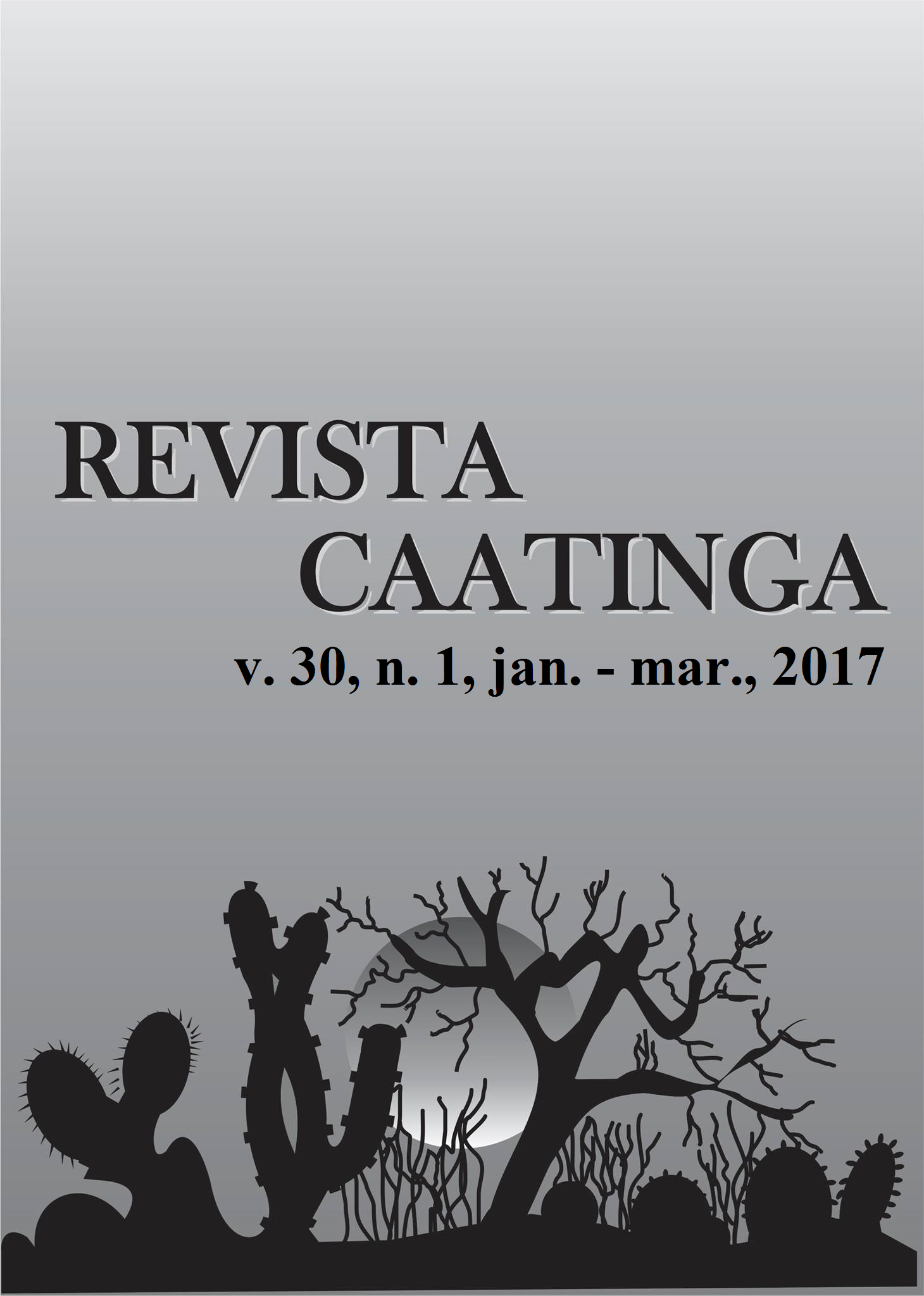MECHANISMS CONTROLLING SURFACE WATER QUALITY IN THE COBRAS RIVER SUB-BASIN, NORTHEASTERN BRAZIL
DOI:
https://doi.org/10.1590/1983-21252017v30n120rcKeywords:
Desertification. Semiarid. Salinity.Abstract
Stream water quality is dependent on many factors, including the source and quantity of the streamflow and the types of geology and soil along the path of the stream. This study aims to evaluate the origin and the mechanisms controlling the input of ions that effect surface water quality in the sub-basin of the Rio das Cobras, Rio Grande do Norte state, Northeastern Brazil. Thirteen ponds were identified for study: three in the main river and ten in the tributaries between, thus covering the whole area and lithology of the sub-basin. The samples were collected at two different times (late dry and rainy periods) in the hydrological years 2009 and 2010, equating to total of four collection times. We analyzed the spatial and seasonal behavior of water quality in the sub-basin, using Piper diagrams, and analyzed the source of the ions using Guibbs diagram and molar ratios. With respect to ions, we found that water predominate in 82% sodium and 76% bicarbonate water (cations and anions, respectively). The main salinity control mechanism was related to the interaction of the colloidal particles (minerals and organic sediment) with the ions dissolved in water. Based on the analysis of nitrates and nitrites there was no evidence of contamination from anthropogenic sources.Downloads
References
AYERS, R. S.; WESTCOT, D.W. A qualidade da água na agricultura. 2. ed. Campina Grande, PB: UFPB, 1999, 153 p. (Estudos de Irrigação e Drenagem 29).
BARROSO, A. A. et al. Avaliação da qualidade da água para irrigação na região Centro Sul no Estado do Ceará. Revista Brasileira de Engenharia Agrícola e Ambiental, Campina Grande, v. 15, n. 6, p. 588-593, 2011.
BARROSO, A. de A. F. et al. Avaliação qualitativa das águas subterrâneas para irrigação na região do Baixo Jaguaribe – Ceará. Revista Brasileira de Agricultura Irrigada, Fortaleza, v. 4, n. 3, p. 150–155, 2010.
BOWMER, K. H. Water resource protection in Australia: Links between land use and river health with a focus on stubble farming systems. Journal of Hydrology, Amsterdam, v. 403, n. 1-2, p. 176-185, 2011.
BRAZIL. Programa de Ação Nacional de Combate à Desertificação e Mitigação dos Efeitos da Seca (PAN-Brasil). 1. ed. Brasília, DF: Ministério do Meio Ambiente, 2004. 112 p.
EMBRAPA. Manual de análises químicas de solos, plantas e fertilizantes. 1. ed. Rio de Janeiro, RJ: Centro nacional de Pesquisa em Solos, 1999. 370 p.
GIBBS, R. Mechanisms controlling world water chemistry. Science, Washington, v. 170, n. 3962, p. 1088-1090, 1970.
HAYNES, D. et al. Assessment of the Water Quality and Ecosystem Health of the Great Barrier Reef (Australia): Conceptual Models. Environmental Management, v. 40, p. 993-100, 2007.
HELENA, B. et al. Temporal evolution of groundwater composition in an alluvial aquifer (Pisuerga river, Spain) by principal component analysis. Water Research, Amsterdam, v. 34, n. 3, p. 807-816, 2000.
JALALI, M. Assessment of the chemical components of famenin groundwater, Western Iran. Environmental Geochemistry and Health, v. 29, n. 5, p. 357-374, 2007.
JARDIM DE SÁ, E. F. Mapa Geológico do Estado do Rio Grande do Norte. 1: 500,000. Christmas: DNPM/UFRN/PETROBRAS/CPRM, 1998.
KÖPPEN, W. Climatologia: com um estúdio de los climas de la tierra. In: Climatology. Laboratory of Climatology, New Gersey. 1948. 104 p.
PEREIRA, L. et al. A salinidade das águas superficiais e subterrâneas na bacia da Gameleira, Município de Aiuaba/CE, Revista Água Subterrâneas, São Paulo, v. 20, n. 2, p. 9-18, 2006.
PORTO FILHO, F. Q. et al. Evolução da salinidade e pH de solo sob cultivo de melão irrigado com água salina. Revista Brasileira de Engenharia Agrícola e Ambiental, Campina Grande, v. 15, n. 11, p. 1130-1137, 2011.
RAVIKUMAR, P; SOMASHEKAR, R. K.; ANGINE, M. Hydrochemistry and evaluation of groundwater Hydrochemistry and evaluation of suitability for irrigation and drinking purposes in the Markandeya river basin, Belgaum District, Karnataka State, India. Environmental Monitoring and Assessment, Berlin, v. 173, n. 1-4, p. 459-487, 2011.
SINGH, K. P. et al. Multivariate statistical techniques for the evaluation of spatial and temporal variation in water quality of River Gomti (India) – a case study. Water Research, Amsterdan, v. 38, n. 18, p. 3980-3992, 2004.
XU, H. et al. Spatiotemporal Variation Assessment and Analysis of Water Quality in the River Zhangweinan Basin, China. Procedia Environmental Sciences, Amsterdam, v. 13, p. 1641-1652, 2012.
YADANA, S. M. The hydrochemical framework of surface water basins in southern Ghana. Environment Geology, Berlin, v. 57, n. 4, p. 789-796, 2009.
Downloads
Published
Issue
Section
License
Os Autores que publicam na Revista Caatinga concordam com os seguintes termos:
a) Os Autores mantêm os direitos autorais e concedem à revista o direito de primeira publicação, com o trabalho simultaneamente licenciado sob a Licença Creative Commons do tipo atribuição CC-BY, para todo o conteúdo do periódico, exceto onde estiver identificado, que permite o compartilhamento do trabalho com reconhecimento da autoria e publicação inicial nesta revista, sem fins comerciais.
b) Os Autores têm autorização para distribuição não-exclusiva da versão do trabalho publicada nesta revista (ex.: publicar em repositório institucional ou como capítulo de livro), com reconhecimento de autoria e publicação inicial nesta revista.
c) Os Autores têm permissão e são estimulados a publicar e distribuir seu trabalho online (ex.: em repositórios institucionais ou na sua página pessoal) a qualquer ponto antes ou durante o processo editorial, já que isso pode gerar alterações produtivas, bem como aumentar o impacto e a citação do trabalho publicado (Veja O Efeito do Acesso Livre).







